April 29, 2024 | 09:22 GMT +7
April 29, 2024 | 09:22 GMT +7
Hotline: 0913.378.918
April 29, 2024 | 09:22 GMT +7
Hotline: 0913.378.918
Although advanced rice farming techniques including "3 decreases 3 increases (3G3T) and "1 must 5 decreases (1P5G) have been recognized for a long time, farmers have been not interested in applying these techniques.
In the past, farmers used to sow 150-200kg of seed per hectare. To help farmers change their old and ineffective farming practices, during the 2015-2020 period, the Vietnam Sustainable Agriculture Transformation (VnSAT) program funded by the World Bank (WB) supported 8 provinces in the Mekong Delta through transferring scientific and technological advances to help them cultivate rice sustainably with the adoption of 3G3T and 1P5G.
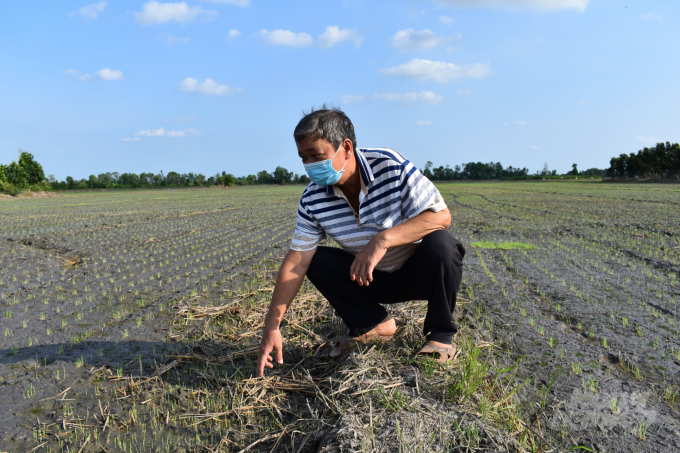
Le Van Teo, director of My Trinh Cooperative (Cai Be, Tien Giang) speak of VnSAT's effectiveness. Photo: Minh Dam.
Since the VnSAT program was launched, the demonstration models have created positive spillover effects. As a result, farmers under and beyond the project areas have changed their ways of cultivation and shifted to new rice farming methods.
In Tien Giang province, a locality under the VnSAT program, local farmers were highly interested in 3G3T and 1P5G techniques. According to the Board of Management of Tien Giang's VnSAT program after the project was implemented, demonstration models have created positive spillover effects. As a result, farmers both under and beyond the project areas have changed their minds and shifted to new rice farming methods.
During the 2010-2015 period, the farmers often needed to sow up to 200kg of seed per hectare to make up for loss. Over the past five years, the VnSAT program has had a positive impact on the farmers' habits of growing rice in the area. The initial result showed that 92.7% in terms of farming household and 93.3% in terms of area in the project area applied 3G3T technique meanwhile 97.5% and 98.8% in terms of household and area respectively put in 1P5G technique.
The shift from traditional farming practices to the application of 3G3T and 1P5G techniques in rice cultivation has helped save money, save water, lower fertilizer, pesticide use and reduce post-harvest losses. Profitability of rice farming increased by 36.4% in the project area.
Currently, with the spread of the VnSAT project, the amount of seed used by the farmers in Tien Giang has been reduced significantly. According to Vo Van Men, Director of the Sub-Department of Plant Production and Protection of Tien Giang province, so far the amount of seed used by the local farmers has been reduced to 120-130kg or 150kg per hectare.
Men added, although the VnSAT has finished training courses on 3G3T and 1P5G techniques, the sub-department has still kept recommending farmers to reduce the amount of seed used in direct-seeded rice. Moreover, in the winter-spring crop of 2021, the province's sub-department carried out some pilot models of using less fertilizer so that the farmers could visit and see the models.
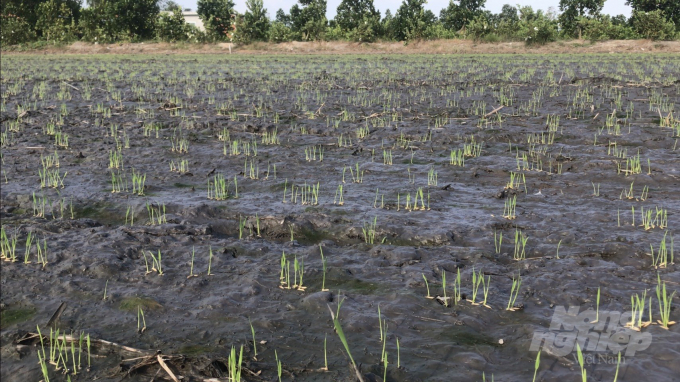
With technical transfer by the VnSAT project, farmers in the project areas bravely apply new technologies in rice cultivation including smart rice farming. Photo: Minh Dam.
In the project area in Cai Be district (Tien Giang province), Phan Thanh Son, Head of the district's Office of Agriculture and Rural Development said by the end of 2019, the district's center for agricultural services coordinated with the sub-department of plant production and protection and the provincial center for agricultural extension to open 90 training courses on 3G3T and 1P5G techniques in rice cultivation in 9 communes including My Hoi, Hau My Trinh, Hau My Phu, Hau My Bac A, Hau My Bac B, My Loi B, My Tan, Thien Trung and My Trung.
Up to now, these scientific and technical advances have been widely spread across Cai Be district. Especially in the 2021-2022 winter-spring crop amid increasing fertilizer prices, the Office of Agriculture and Rural Development of Cai Be district has continued to work with the sub-department of plant production and protection to experiment a model of using less fertilizer, reducing the amount of seed to motivate farmers outside the project areas.
With 3G3T and 1P5G techniques, farmers could use less fertilizer, especially reduce the amount of seed from 150kg/ha to 100-120kg/ha.
It's hard work to put new techniques like 3G3T and 1P5G into use. The models must be done over and over so that farmers could see and believe in them.

The VnSAT program not only changes old rice farming practices but also supports rice consumption. Photo: Trong Linh.
Thanks to being trained on advanced farming techniques farming level of My Trinh cooperative's members has been improved. The technical advances transferred by VnSAT project have become the foundation for the application of new and higher-level techniques.
Recently, My Trinh Cooperative has become a model for other farmers and cooperatives to come and learn about these techniques. Over the past cropping seasons, My Trinh and My Trung Cooperatives linked up with ADC Company Limited to carry out "Dream Fields" program. Under the program, farmers could buy fertilizer directly from the company with preferential prices. On top of that, rice grown by these farmers could be sold easily.
In the winter-spring and spring-summer crops of 2022, My Trinh Cooperative will continue to demonstrate a smart rice farming model under the supervisions of Tien Giang Center for Agricultural Extension and Binh Dien Fertilizer Joint Stock Company. The model aims to reduce the amount of seed to 40kg/ha. The advanced techniques have changed the old and ineffective farming practices, making Tien Giang's rice production more and more modern and sustainable.
Translated by Mai Tham
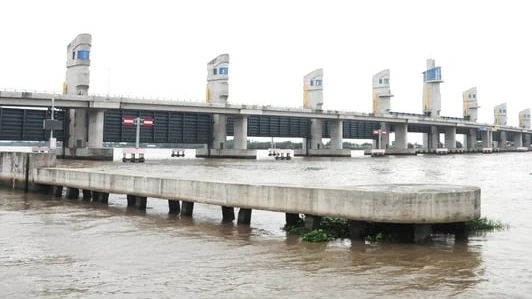
(VAN) Large-scale irrigation projects in the Mekong Delta have safeguarded a beneficiary area spanning more than 1 million hectares, significantly mitigating damage caused by drought and saltwater intrusion.
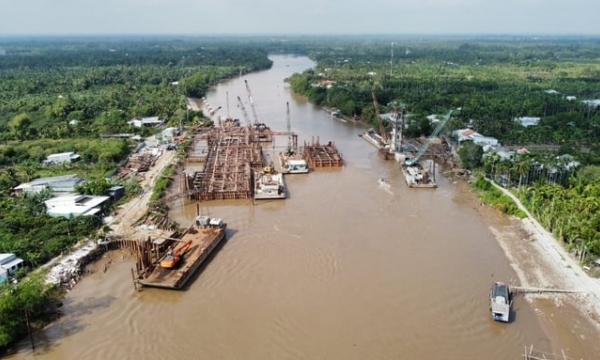
(VAN) Residents along the south bank of the Hau River are anticipating the Rach Mop lock by the end of 2024, along with projects to fortify the irrigation system to prevent saltwater intrusion.
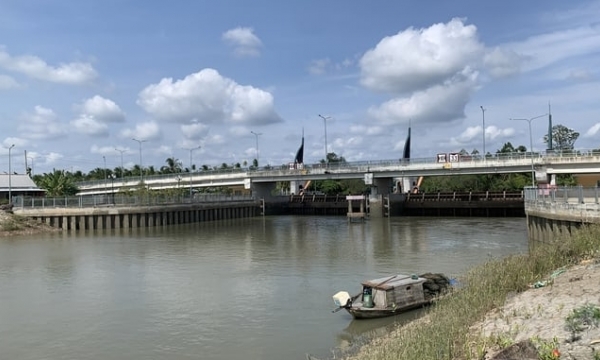
(VAN) The Bong Bot - Tan Dinh sluice delivers fresh water to meet the production demands of thousands residing in Tra Vinh province's coastal areas.
/2024/04/26/0500-3-135847_403.jpg)
(VAN) According to Dr. Dao The Anh, if indigenous varieties that are highly nutritious and adapt to climate change can be developed, the community will greatly benefit.
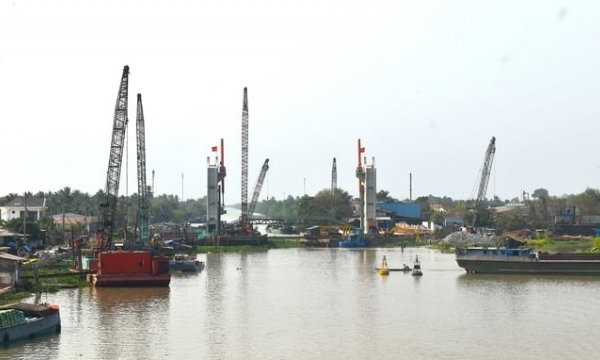
(VAN) The Nguyen Tan Thanh sluice is crucial in preventing salinity and storing freshwater to meet the daily needs of over 1.1 million residents in Tien Giang and Long An provinces.
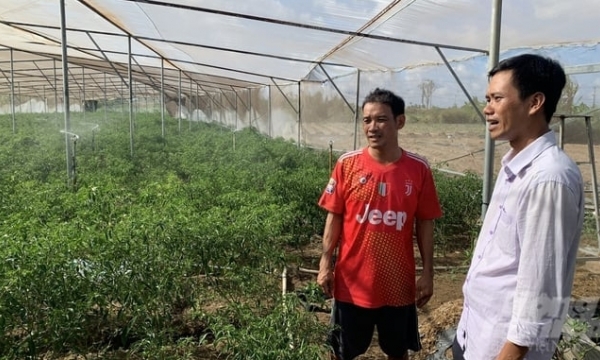
(VAN) The project, sponsored by the European Union, is implemented in Dong Thap, Kien Giang, and Tra Vinh provinces, with a total funding of 4.2 million Euros.
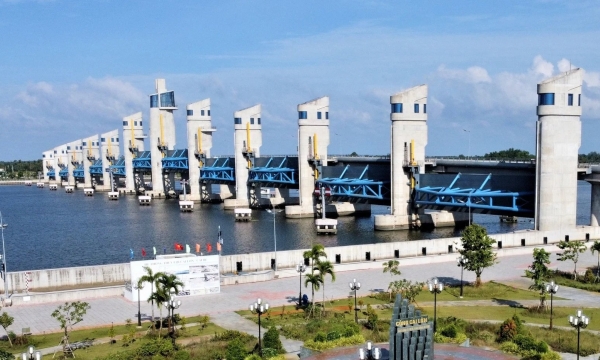
(VAN) In the heart of the Mekong Delta, the Cai Lon and Cai Be sluice gates act as guardians, halting the incursion of salty tides deep into the inland fields and managing freshwater resource distribution.